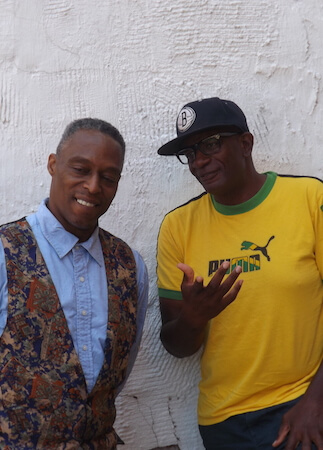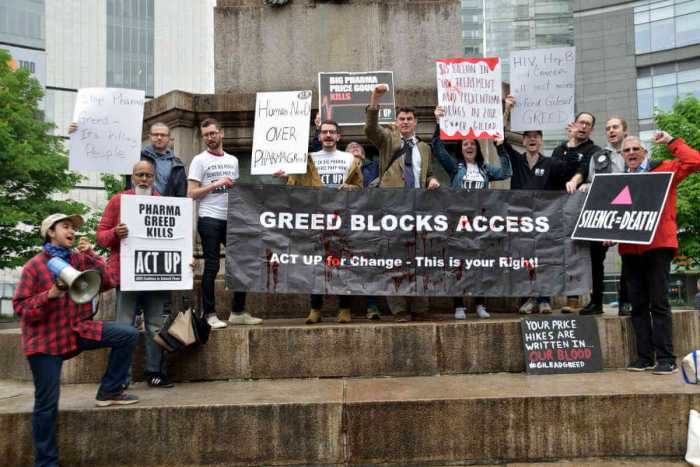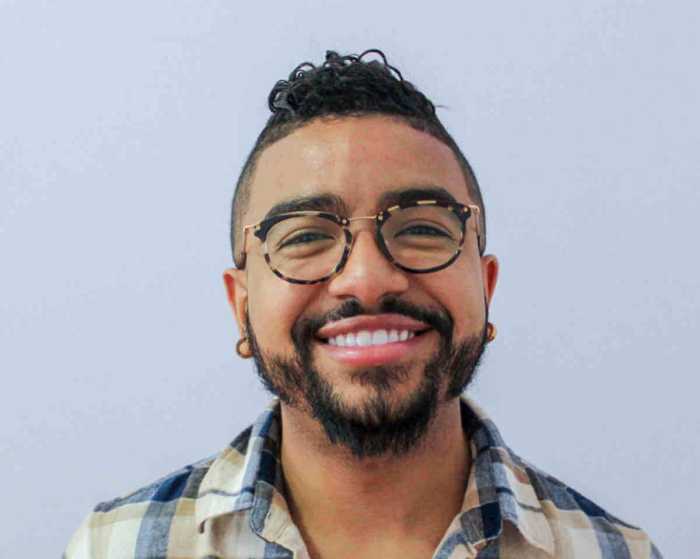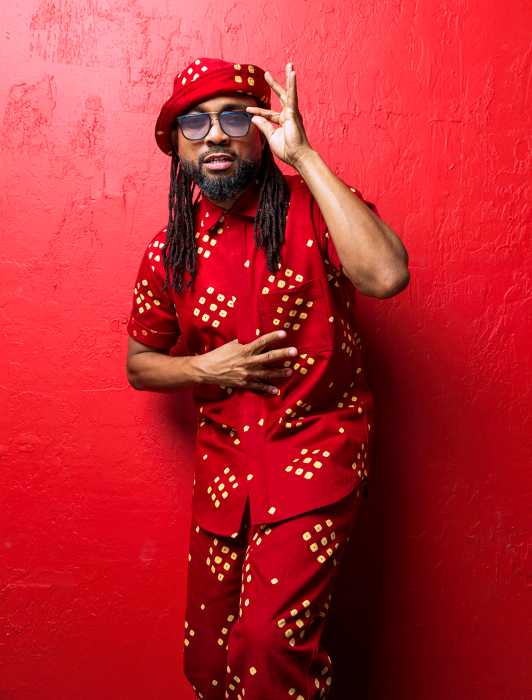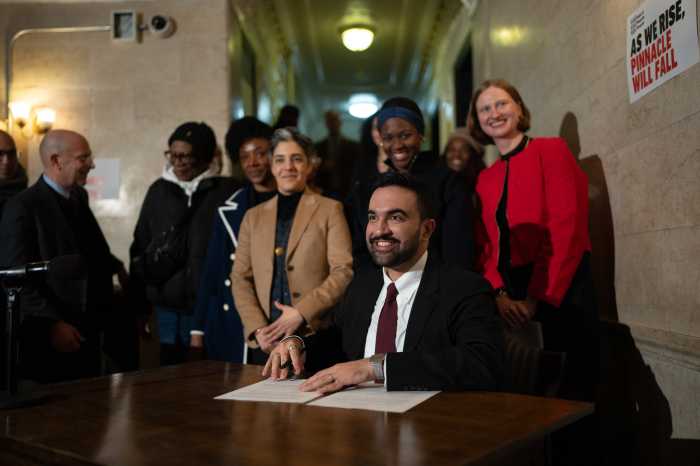Bishop Zachary G. Jones on the left and Nathan Kerr. | GAY CITY NEWS
Activists who have led HIV prevention and community-building efforts among lesbian, gay, bisexual, and transgender African Americans continue to express frustration that this population is not getting sufficient attention or resources in New York State’s Plan to End AIDS.
“What we’re saying now is that there is a lot of rhetoric going on, good rhetoric, but that rhetoric must match the reality,” said Nathan Kerr, a member of the Black LGBT Alliance of New York. “Nothing has changed as far as trying to engage the black LGBT community in this.”
The alliance was formed last year to re-engage that community in discussions on HIV, health, and social justice, and also to ensure that the voice of that community was included in the state’s plan, which aims to reduce new HIV infections in New York from the current roughly 3,000 annually to 750 a year by 2020.
Veterans of fight against epidemic in New York unhappy about inattention from state, city
The plan relies largely on pre-exposure prophylaxis (PrEP), which involves the use of anti-HIV drugs by HIV-negative people to keep them uninfected, post-exposure prophylaxis (PEP), which prevents infection by giving anti-HIV drugs to HIV-negative people with a recent exposure to the virus, and treatment as prevention (TasP), which involves the consistent use of anti-HIV drugs by HIV-positive people so they can remain non-infectious. All three drug regimens have a proven effectiveness when taken correctly.
More than 90 percent of new HIV infections in New York are in New York City, and all demographic groups in the city have seen declines in new infections in recent years except gay and bisexual men. In 2013, there were 2,832 new HIV diagnoses in the city and gay and bisexual men accounted for nearly 57 percent, with 1,609 new diagnoses.
Among all men, gay and bisexual men accounted for 70 percent of the new HIV diagnoses. Latino men accounted for 785 diagnoses and African-American men accounted for 874 diagnoses. The data shows that the new HIV diagnoses among all men are occurring largely among men who have sex with men, so if the plan does not make substantial reductions in new HIV infections in this population, particularly among African-American and Latino men, it will fail.
“If the numbers are really going to come down, we really have to think about this in a different way,” said Gary English, the former head of People of Color in Crisis (POCC), an AIDS group that closed in 2008.
Members of the alliance, which counts Gay Men of African Descent (GMAD), Breaking Ground, MOCHA, and Black Men Talking among its collaborators, were dismayed last year when just three black gay men were appointed to the 63-members task force that created the plan. Now the slow pace at which implementation is proceeding is frustrating them as is the continued inattention to black gay men.
“The agencies, the health department have not stepped forward to say, ‘We need to fast track this,’” said Zachary G. Jones, a senior bishop at Brooklyn Unity Fellowship of Christ Church. “Every meeting we have had, we have initiated.”
Until it closed amid allegations of financial impropriety by English’s successor, POCC was among the premiere organizations serving black gay men in the country, if not the leader. GMAD struggled financially in 2012 and its annual budget now, at about $700,000, is about half of what it had been in better years.
And as the response to HIV has been medicalized, government and private funders increasingly support organizations that perform thousands of HIV tests a year, identify previously unknown HIV-positive people, and get them into treatment. Funders have moved away from the behavioral interventions, such as counseling, that were the core of POCC’s and GMAD’s services. What these groups do offer is unique access to a population that may be hard to find, and they can link people to larger medical facilities where they can get PrEP, PEP, or TasP.
Kerr said some of the larger AIDS groups have a “history of being unable to engage the black gay community.”
POCC used to produce Pride in the City, which was a week-long series of events held in August that attracted thousands of people of color. It was also a way to distribute health messages and do HIV testing. When Jones raised reviving Pride in the City with government funders, he got a “humdrum response,” he said.
Jones was frustrated that it appears little was done to use this year’s Pride festivals to tell any community about PrEP and that the summer may pass without that information getting to high-risk populations.
“There are opportunities that are passing us by,” he said during a June 22 interview at Kerr’s Bedford-Stuyvesant home. “Gay Pride is next weekend… Now is the time.”
The activists are pressing city, state, and federal health authorities to increase the resources going to serve black gay men and to set goals for success between now and 2020.
“We also need to have benchmarks, we need to have numbers,” Kerr said. Jones quickly added, “Not just a 2020 benchmark, all the numbers that lead up to that.”
And they want the work of getting PrEP and PEP to the African-American LGBT community to get started now.
“We don’t want to wait until year four,” Kerr said. “We want to be upset now so we don’t have to be upset then.”

